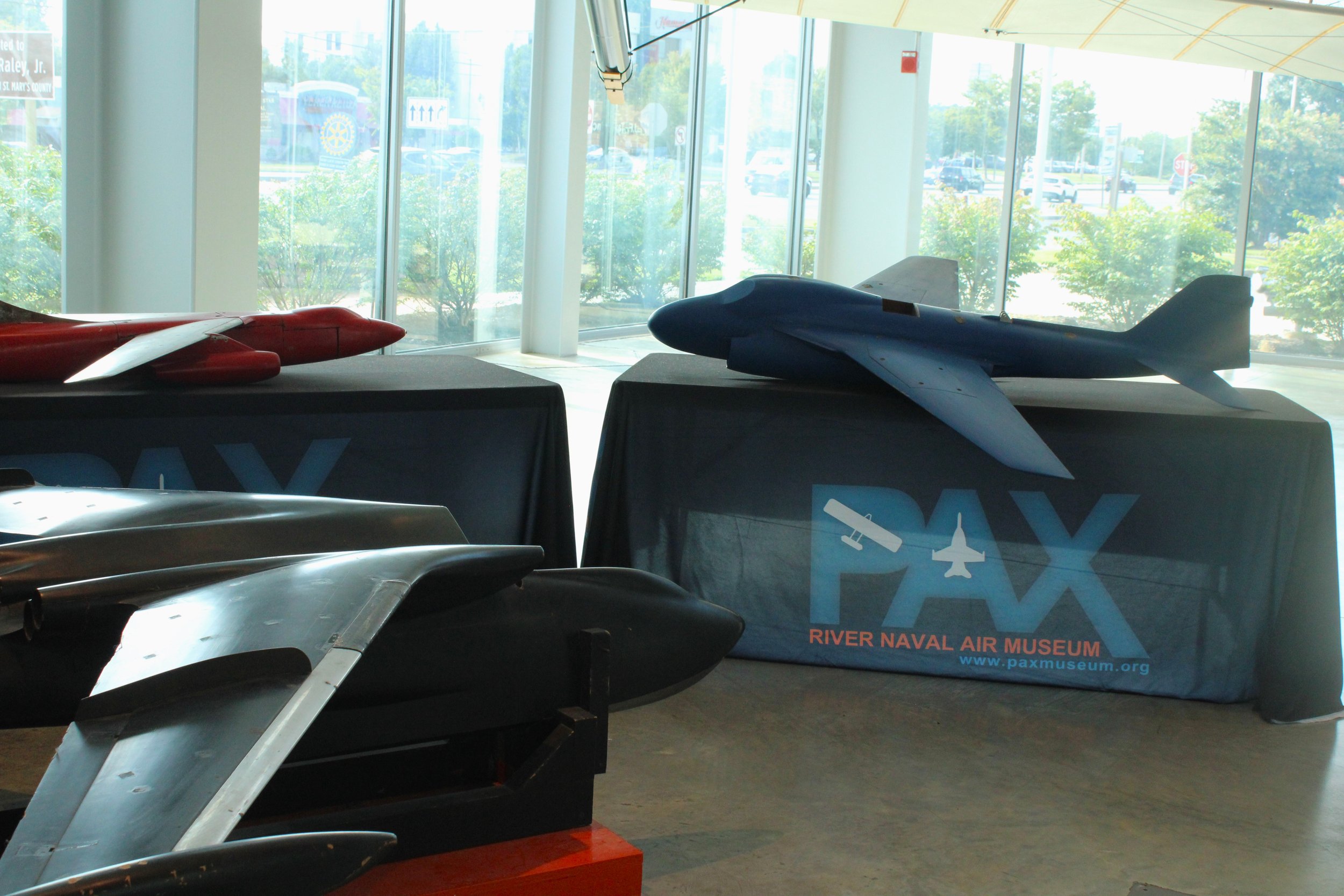
WIND TUNNEL MODELS
The Patuxent River Naval Air Museum is very fortunate to have a variety of these highly accurate models on display that were used over the past 100 years prior to the more recent employment of simulators and computer programs to do the same thing. Many of these models are a thing of beauty in their design and craftsmanship.
We hope that you may have an opportunity to come visit us and see these artifacts for the superb designs used to test prototype designs prior to actual construction.
We have one of the largest collections of actual wind tunnel models in the country and are proud to have the support of the Smithsonian Air and Space Museum in Washington, D.C. who loaned us several of the items in our collection.
A Brief History…
Wind tunnels date back to the late 19th century. They were used by the Wright Brothers and other aviation pioneers in heavier-than-air flight. They have been operated by the Navy since 1914.
Aircraft are still designed using wind tunnels and are used together with computer simulation methods like computational fluid dynamics (CFD).
A fascinating aspect of early design and flight testing of naval aircraft, much like the corresponding hand-built models of surface ships that are present in the lobby area of our Flight Technology Hall, is the use of hand-built scale models that were then used in wind tunnels (for the aircraft) and large water tanks (for the ships) to evaluate their flow patterns through the medium to determine early-on stability, controllability, and handling characteristics prior to building the actual aircraft or ship.
The Naval Aerodynamics Test Facility at the NAS Patuxent River currently operates a wind tunnel capable of speeds up to 121 knots (139 mph). This speed range is useful for evaluating an aircraft's low-speed performance characteristics.
Quick Facts
Help determine
By moving air over a model as though it were an aircraft in flight, wind tunnels help determine whether the eventual (real) aircraft will fly as it should.
Aerodynamic forces
Wind tunnels allow engineers to determine the basic aerodynamic forces (such as lift, drag, side loads, etc.) acting on an aircraft.
Some models are used together with smoke, tuft of yarn, pressure-sensitive paint, or other means for visualizing the airflow around the model.
Powerful fan
Models, like those on display, are held stationary in the wind tunnel, while a powerful fan blows air over the model at different speeds.
Air pressure distribution
Models, like those on display, are held stationary in the wind tunnel, while a powerful fan blows air over the model at different speeds.
Other models are constructed with a series of small instrumented holes or taps, that are used to measure the air pressure distribution across the model.




